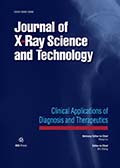Authors: Yang, Sijing | Liang, Yongbo | Wu, Shang | Sun, Peng | Chen, Zhencheng
Article Type:
Research Article
Abstract:
Highlights • Introduce a data augmentation strategy to expand the required different morphological data during the training and learning phase, and improve the algorithm’s feature learning ability for complex and diverse tumor morphology CT images. • Design attention mechanisms for encoding and decoding paths to extract fine pixel level features, improve feature extraction capabilities, and achieve efficient spatial channel feature fusion. • The deep supervision layer is used to correct and decode the final image data to provide high accuracy of results. • The effectiveness of this method has been affirmed through validation on the LITS, 3DIRCADb, and SLIVER datasets.
…BACKGROUND: Accurately extracting liver and liver tumors from medical images is an important step in lesion localization and diagnosis, surgical planning, and postoperative monitoring. However, the limited number of radiation therapists and a great number of images make this work time-consuming. OBJECTIVE: This study designs a spatial attention deep supervised network (SADSNet) for simultaneous automatic segmentation of liver and tumors. METHOD: Firstly, self-designed spatial attention modules are introduced at each layer of the encoder and decoder to extract image features at different scales and resolutions, helping the model better capture liver tumors and fine structures. The designed spatial attention module is implemented through two gate signals related to liver and tumors, as well as changing the size of convolutional kernels; Secondly, deep supervision is added behind the three layers of the decoder to assist the backbone network in feature learning and improve gradient propagation, enhancing robustness. RESULTS: The method was testing on LITS, 3DIRCADb, and SLIVER datasets. For the liver, it obtained dice similarity coefficients of 97.03%, 96.11%, and 97.40%, surface dice of 81.98%, 82.53%, and 86.29%, 95% hausdorff distances of 8.96 mm, 8.26 mm, and 3.79 mm, and average surface distances of 1.54 mm, 1.19 mm, and 0.81 mm. Additionally, it also achieved precise tumor segmentation, which with dice scores of 87.81% and 87.50%, surface dice of 89.63% and 84.26%, 95% hausdorff distance of 12.96 mm and 16.55 mm, and average surface distances of 1.11 mm and 3.04 mm on LITS and 3DIRCADb, respectively. CONCLUSION: The experimental results show that the proposed method is effective and superior to some other methods. Therefore, this method can provide technical support for liver and liver tumor segmentation in clinical practice.
Show more
Keywords: Automatic segmentation, spatial attention mechanism, deep supervision, liver, liver tumors
DOI: 10.3233/XST-230312
Citation: Journal of X-Ray Science and Technology,
vol. Pre-press, no. Pre-press, pp. 1-17, 2024
Price: EUR 27.50




